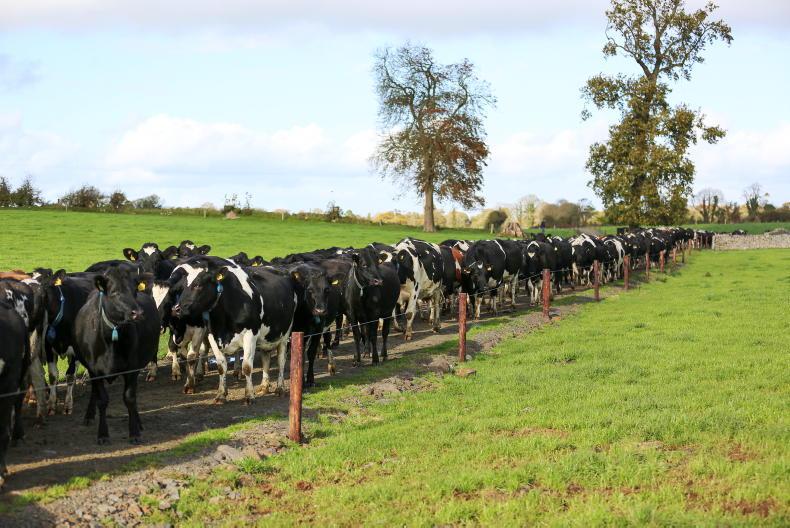Eighty percent of Irish dairy farms are classed as economically viable, the Teagasc national farm survey (NFS) for 2020 shows.
Economically viable farm businesses have a family farm income (FFI) that can remunerate family labour at the minimum wage, as well as provide a 5% return on the capital invested on non-land assets such as livestock.
While 80% of dairy farm businesses were classified as viable, only 11% of drystock farms were viable in 2020.
Farm households are economically vulnerable if they are operating non-viable farm businesses and neither the farmer or spouse are employed off-farm.
In 2020, only 9% of dairy farms were considered vulnerable.
The remaining 11% were classed as economically sustainable - these are farms found not to be economically viable, but have an off-farm income source.
Costs per cow
In terms of direct costs per cow, there were higher figures seen in the north and west (€1,208) in line with higher levels of concentrate feed usage.
In the south, direct costs per cow stood at €1,054 and in the east and midlands it was €1,121.
As a result, FFI per cow is highest in the south at €967.
This is €160 more per cow in the south compared with the eastern and midland regions and €140 more per cow compared with the north and west regions.
Breakdown of dairy farms
Irish dairy farms have been subject to considerable change since the abolition of EU milk quotas in 2015. However, it is still the highest earning sector.
There are approximately 16,146 dairy farms, with an average FFI of €74,236 in 2020.
This was in stark contrast to cattle-rearing enterprises, which had an average FFI of just over €9,000.
Both milk production and yield per cow increased in 2020, as did national herd size, albeit marginally, which rose from 80 cows in 2019 to 82 cows in 2020.
Regional data has shown that growth has been mainly occurring in the east and midlands regions.
The survey shows that dairy farms in the east and midlands regions are larger, in terms of both herd size and land area.
However, farm-related debt is twice as high in these regions in comparison with the south of the country.






 This is a subscriber-only article
This is a subscriber-only article











SHARING OPTIONS: